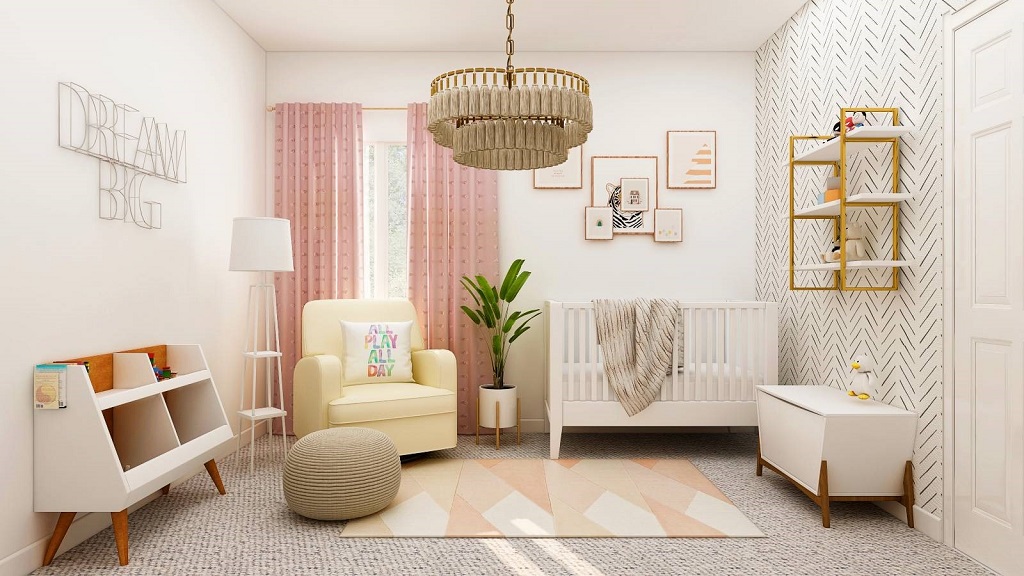Home decor trends are constantly in flux, reflecting homeowners’ evolving needs and desires. As we navigate 2024 and look ahead, several distinct styles and elements emerge as the driving forces in interior design. Let’s delve into the most prominent trends shaping the homes of today and tomorrow.
1. The Rise of “Warm Minimalism”
Minimalism continues its reign, but it’s undergoing a metamorphosis. Gone are the stark, cold spaces; instead, we’re seeing a warmer, more inviting approach. This involves incorporating natural materials, textured fabrics, and earthy color palettes to create a sense of comfort and serenity. Think of it as minimalism with a soul.
Key Elements:
- Natural materials like wood, rattan, and linen
- Earthy colors like beige, terracotta, and sage green
- Soft textures like boucle and chunky knits
- Minimal furniture with clean lines
- Curated decor pieces that spark joy
2. Biophilic Design: Bringing the Outdoors In
The connection between humans and nature is undeniable, and biophilic design aims to strengthen that bond within our living spaces. This trend incorporates natural elements, patterns, and lighting to create environments that promote well-being and tranquility.
Key Elements:
- Abundant greenery with houseplants and vertical gardens
- Natural light through large windows and skylights
- Natural materials like wood and stone
- Water features like fountains or aquariums
- Nature-inspired patterns and textures
3. “Japandi”: Where Japan Meets Scandinavia
The fusion of Japanese and Scandinavian aesthetics results in “Japandi,” a trend that’s both minimalist and cozy. It emphasizes functionality, craftsmanship, and natural materials, creating spaces that are both calming and elegant.
Key Elements:
- Neutral colors like white, black, and gray
- Natural materials like wood and bamboo
- Clean lines and uncluttered spaces
- Handmade ceramics and textiles
- Focus on functionality and craftsmanship
4. Maximalism Makes a Comeback
After years of minimalist dominance, maximalism is re-emerging as a bold and expressive alternative. This trend encourages personality, eclecticism, and a playful mix of patterns, colors, and textures. It’s about creating spaces that tell a story and reflect the homeowner’s individuality.
Key Elements:
- Bold colors and patterns
- Layered textures and textiles
- Vintage and antique furniture
- Statement lighting fixtures
- Curated collections of art and objects
Read More: Keeks Design Reviews: An In-Depth Look at the Popular Eames Replica Chairs
5. “Grandmillennial” Style: Nostalgia with a Twist
Millennials are embracing their grandparents’ design sensibilities but with a modern twist. The “grand millennial” style blends vintage and antique pieces with contemporary elements, creating spaces that are both nostalgic and fresh.
Key Elements:
- Floral patterns and chintz fabrics
- Ruffles, pleats, and embroidery
- Antique furniture and accessories
- Pastel color palettes
- A mix of old and new
6. Sustainability Takes Center Stage
As environmental awareness grows, sustainability is becoming a central theme in home decor. This involves choosing eco-friendly materials, repurposing furniture, and reducing waste. It’s about creating spaces that are beautiful and responsible.
Key Elements:
- Recycled and reclaimed materials
- Upcycled furniture and decor
- Energy-efficient lighting and appliances
- Natural and organic textiles
- Minimalist approach to reduce consumption
7. Technology Integration: Smart Homes, Smart Decor
The rise of smart home technology is influencing decor choices. Homeowners are opting for furniture and accessories that seamlessly integrate with their smart systems, creating spaces that are both functional and futuristic.
Key Elements:
- Smart lighting and thermostats
- Voice-activated assistants
- Hidden charging stations
- Furniture with built-in technology
- Seamless integration of technology and design
8. Multifunctional Spaces: Adapting to New Lifestyles
As homes become multifunctional hubs for work, play, and relaxation, spaces need to be adaptable. This trend involves creating flexible layouts, convertible furniture, and smart storage solutions to maximize space utilization.
Key Elements:
- Open-plan layouts
- Convertible furniture like sofa beds and Murphy desks
- Smart storage solutions like built-in shelves and hidden compartments
- Multi-purpose rooms that can serve various functions
- Focus on flexibility and adaptability
9. Personalized Expression: Uniqueness is Key
Homeowners are moving away from cookie-cutter designs and embracing their individuality. This trend involves incorporating personal touches, curated collections, and DIY projects to create spaces that reflect their unique tastes and stories.
Key Elements:
- Family heirlooms and vintage finds
- Travel souvenirs and collected objects
- DIY projects and personalized artwork
- A mix of high and low-end pieces
- Focus on self-expression and individuality
10. Global Influences: A World of Inspiration
The world is becoming increasingly interconnected, and this is reflected in home decor. Global influences are evident in the use of exotic textiles, ethnic patterns, and handcrafted furniture. It’s about creating spaces that celebrate diversity and cultural richness.
Key Elements:
- Textiles and patterns from different cultures
- Handcrafted furniture and decor
- Use of natural materials like rattan and bamboo
- Earthy color palettes with pops of vibrant hues
- A mix of global and local elements
Conclusion
Home decor trends are a reflection of our changing lifestyles, values, and aspirations. The current trends point toward a future where homes are not only aesthetically pleasing but also sustainable, functional, and deeply personal. Whether you prefer the warmth of minimalism, the boldness of maximalism, or the fusion of global influences, there’s a trend out there that’s perfect for you.
Embrace your individuality, prioritize sustainability, and create a space that truly feels like home. The future of home decor is bright, and it’s waiting for you to shape it.




